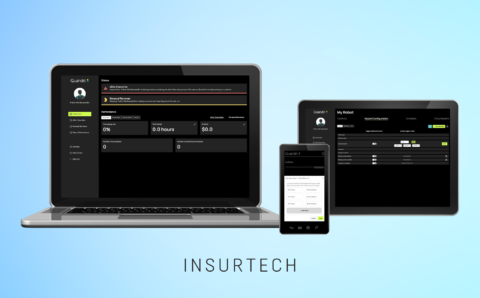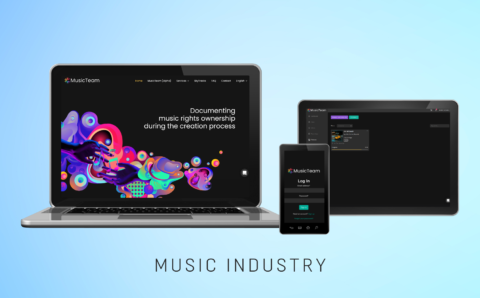
Software development is the very essence of many startups, within which they bring innovative ideas to life and gain a competitive edge in the market. For startups, efficient and robust software solutions can facilitate operational efficiency, customer engagement, and faster business growth. However, only some of the released products gain success and become sought-after. Clayton Christensen, a Harvard Business School professor, claims that nearly 30,000 new products are launched annually, yet 95% of them fail. According to Failory, 16% of startups’ failure reasons account for financial issues.
That’s why, as an entrepreneur, you should essentially obtain a detailed view of the costs associated with software development. Prioritized budgeting and planning ensures that startups can allocate resources effectively without compromising on quality or innovation. Therefore, you can ensure better financial forecasting, risk management, and strategic planning, which are essential for long-term sustainability.
Reading this article, you’ll discover the breakdown of the various factors affecting software development costs for startups. This comprehensive overview will help entrepreneurs make informed decisions. Let’s investigate these factors so you can better handle the complexities of a startup development cost and align the budgets with the core objectives.
Table of Contents:
Understanding Software Development Costs
Before delving into the startup budget dynamics, it’s essential to outline the basic elements of software development for startups. This contributes to wise financial planning and resource allocation so you, as a startup owner, can make relevant decisions that reflect your budgetary constraints and growth objectives.
Software development relates to a process of app or web development as well as integration, maintenance, and creation of systems, frameworks, or other software components. This flow comprises several key stages: design, coding, testing, and maintenance. These phases directly form software development startup costs.
Design
The design phase implies defining the software’s architecture and user interface. It covers conceptualizing user requirements and creating design specifications that guide the development process. According to Clutch, a well-organized user interface (UI) and user experience (UX) design can tangibly boost your business performance, as 94% of individuals agree that a website directly reflects a brand’s reputation based on its appearance. Furthermore, 94% of users put straightforward navigation first, and 83% emphasize maintaining an appealing and up-to-date website for user satisfaction.
Forrester’s insights indicate that a well-executed UI can boost conversion rates by nearly 200%, while an optimized UX can lead to an even more substantial increase of up to 400%. Thus, you should take the design step in your web development project seriously.
Coding
Within the coding stage, software engineers write the actual code based on the design and technical specifications. This is where the software’s functionality is implemented by employing programming languages, tools, and frameworks. For instance, Python has become a time-tested programming language for seamless and efficient development. According to Statista, it took third place in the rating of the most used technologies in 2023, with 49.28% of technicians using it. Besides, in TIOBE insights, this programming language takes the first place as the most popular option. Python is used for a broad range of purposes and is already adopted by giant corporations like Netflix, Glovo, Reddit, Tinder, Amazon, and Salesforce.
Python is also an excellent choice for small-scale projects and startups due to its simplicity, readability, and versatility. It allows rapid development and iteration of prototypes and MVPs. Extensive libraries and a community of Python support can streamline your product development, guaranteeing seamless growth and scaling of your business.
Testing
Once the code is written, it undergoes meticulous testing to determine and liquidate bugs prior to the release, ensure functionality, and validate that it meets the specified requirements. Testing can be manual, automated, or both. It incorporates unit testing, integration testing, system testing, and user acceptance testing. Gartner claims that organizations automate software testing to enhance product quality and accelerate deployment, which may be useful for startup software development. Among the respondents, 60% cited improving product quality as a key reason for automation, while 58% highlighted the need to increase deployment speed.
Deployment
The deployment phase implies releasing the software to a production environment where end-users can access and use it. This phase ensures that the software is correctly configured and installed on the necessary servers, devices, or platforms. It includes setting up the essential infrastructure, configuring environments, and performing a soft launch or beta testing with a limited audience before a full-scale release. As McKinsey claims, a critical decision here is choosing between public and private cloud infrastructure. This decision is influenced by economies of scale, infrastructure size, risk tolerance (such as data security or performance), and regulatory requirements.
When done correctly, proper deployment practices guarantee that the software is stable, performant, and secure when it goes live.
Maintenance
After your software is deployed, it requires ongoing maintenance to enhance its functionality, update features further, eliminate bugs, and ensure compatibility with new technologies or changing user needs. This stage also covers regular updates and optimizations to improve performance and security.
According to the National Library of Medicine, the cost of software maintenance is on the rise. Estimates indicate that approximately 90% of a software’s lifetime expenses are covered by its maintenance phase.
Why Costs Vary
Software development startup costs can vary widely. The scope of the project significantly impacts expenses; a simple app costs less than a complex system with advanced features. Project complexity, requiring specialized skills and extensive testing, further raises your budget. The team’s size and expertise also significantly change the final amount, as experienced developers or larger teams may increase the budget but enhance quality. The chosen technology stack can drive up costs, especially if it demands specific expertise. The geographic location of your IT team directly affects costs, too, as developer rates vary globally. Besides, if your project requires some urgent timelines, expenses can escalate due to the need for additional resources and extended hours.
To get a clearer understanding of potential costs and better plan your budget, consider using a development calculator, which can help you estimate the expenses based on various factors such as project complexity, team size, and technology stack.
Key Factors Influencing Costs
Startup development costs can vary significantly depending on several key factors, each playing a core role in shaping the final budget of your project. Your initial requirements, product complexity, team composition, technologies, and many other factors determine the investment required and impact the venture’s long-term financial sustainability. Let’s thoroughly explore each of the critical factors impacting startup development costs.
Project Scope and Complexity
The complexity impacts the amount of time, expertise, and effort needed, thereby increasing the overall investment sum.
The project scope defines the breadth and depth of the software development project, outlining its critical aims, functionality elements, and deliverables. A clear and well-defined scope can greatly help you estimate the required resources and set realistic timelines.
Simple projects cover basic functionalities like a single-platform mobile app or a plain website, which require less time and fewer resources. In practice, the average software startup cost for a small e-commerce website with standard features like product listings, order tracking, and checkout may be from $10,000 to $50,000.
Complex projects, in contrast, comprise advanced features like custom integrations, data analytics, or multi-platform support. An instance may be a large-scale enterprise application with complex databases, real-time analytics, and solid security standards, potentially taking several months to develop and costing hundreds of thousands of dollars.
Development Team Composition
A typical development team consists of various roles, such as developers, designers, project managers, quality assurance testers, and business analysts. The composition and expertise of the team significantly impact the cost.
-
- Freelancers can be a cost-effective option for smaller projects, as they often charge lower rates and offer flexibility. Still, there were reported cases when freelancers have left the project prior to finishing their responsibilities. Thus, this option is relatively less stable and more time-consuming to check the hard and soft skills of the expert.
- Full-time employees might be right for startups seeking long-term development and maintenance, though they come with higher costs due to salaries, benefits, and overheads.
- IT agencies provide a full range of services and expertise, ideal for projects of any scale. With their structured processes and professional services, you can optimize your product implementation and guarantee top-class output quality, as your project is in safe hands. In case you are doubtful about how to hire a developer for a startup, don’t worry – your IT vendor is guaranteed to provide you with proven tech-savvy specialists, liquidating the employment hustle and bustle.
| Role | Average salary (annual) | Additional costs (benefits, taxes, equipment, etc.) | Total estimated annual cost |
| Software developer | $90,000 – $250,000 | 30% ($27,000 – $75,000) | $117,000 – $325,000 |
| UX/UI designer | $80,000 – $190,000 | 30% ($24,000 – $57,000) | $104,000 – $247,000 |
| Project Manager | $100,000 – $175,000 | 30% ($30,000 – $52,500) | $130,000 – $227,500 |
| Quality Assurance engineer | $70,000 – $150,000 | 30% ($21,000 – $45,000) | $91,000 – $195,000 |
| Business Analyst | $85,000 – $170,000 | 30% ($25,500 – $51,000) | $110,500 – $221, 000 |
Technology Stack
The technology stack refers to the set of technologies employed to create the software, covering the front end, back end, databases, and mobile platforms.
-
- Frontend technologies like React or Angular focus on user interface development.
- Backend technologies like Node.js or Django handle the server-side logic.
- Mobile technologies such as Swift for iOS or Kotlin for Android are used for mobile app development.
Different technologies come with varying levels of complexity, availability of skilled developers, and cost. For instance, using a niche technology may lead to higher costs due to the limited availability of experts.
Web development is more cost-efficient and highly beneficial for startups due to the availability of pre-built frameworks and open-source technologies that reduce development time and costs. Web-based platforms provide scalability, allowing startups to expand their services and reach a broader audience without significant upfront investments in infrastructure.
Geographic Location
Software development startup costs are primarily determined based on the location where your software development team performs.
-
- North America and Western Europe have substantially higher development costs due to higher living standards and wages.
- Eastern Europe and Asia offer more affordable rates due to lower living costs. These regions are often go-to options for startups because the quality of IT services remains flawless, yet the costs are decreased, delivering excellent value-for-money rates.
You should find the best balance between quality and affordability for your case. It is highly recommended to consider a trusted IT vendor from Eastern Europe.
Due to the aforementioned aspects, let’s compare the developers’ technology rates among various countries.
| Region | Countries | Python | JavaScript | Java | Ruby | PHP | C# |
| Eastern Europe | Ukraine, Poland | $25-$60 | $20-$50 | $25-$60 | $25-$60 | $25-$60 | $25-$60 |
| Asia | India, Philippines, Vietnam | $20-$50 | $15-$40 | $20-$50 | $15-$50 | $20-$50 | $20-$50 |
| Latin America | Mexico, Brazil, Argentina | $30-$70 | $25-$60 | $30-$70 | $30-$70 | $30-$70 | $30-$70 |
| Africa | South Africa, Egypt, Kenya | $20-$50 | $15-$40 | $20-$50 | $20-$50 | $20-$50 | $20-$50 |
| Western Europe | United Kingdom, Germany | $50-$150 | $40-$120 | $50-$150 | $50-$150 | $50-$150 | $50-$150 |
Development Methodology
Different development methodologies impact costs in various ways.
-
- Agile methodology represents iterative development, allowing for more flexibility and frequent revisions. It can help reduce costs by catching issues early, as well as make sure your project can seamlessly cater to dynamic modifications occurring within development.
- Waterfall methodology follows a gradual and sequential approach, with each phase executed before proceeding to the next one. It is easier to budget for but less flexible to changes, potentially leading to higher costs if significant changes are necessary after a phase is completed.
The choice of methodology should be based on the project’s needs, which can influence the overall cost and efficiency of the development process. If we turn to GoRemotely statistics, it was indicated that in 2022, 71% of companies have adopted Agile practices, which have proven beneficial for 98% of them. Besides, 60% of these companies have seen increased profits following Agile adoption, while Agile methodologies have been adopted by 80% of federal IT projects. Last but not least, the Agile failure rate stands at only 8%.
Timeframe and Deadlines
Urgent milestones often lead to higher costs as they may require extra resources, extended performance, or expedited processes. We highly suggest you to set realistic timeframes and avoid the premium costs associated with rush jobs.
Struggling to Hire the Right Developers?
Discover essential tips for hiring startup developers and build a strong tech team to fuel your business growth.
Breakdown of Typical Costs
Each stage of a startup’s lifecycle comprises distinct expenses that can significantly impact the overall budget. For your better guidance, we’ve prepared the average software startup cost by lifecycle stages. These estimates can help you anticipate financial needs better, make informed decisions, and optimize your investments to support the growth and development of your business.
Initial Development Costs
The initial phase of software development implies comprehending the project requirements and drawing up an in-depth implementation roadmap.
-
- Requirement analysis – engaging stakeholders to collect requirements with the assistance of Business Analysts and Project Managers. This typically ranges from $1,000 to $5,000, depending on the project’s complexity.
- Design – creating wireframes, prototypes, and technical architecture. Expenses vary from $2,000 to $10,000 according to the design sophistication and the need for user experience (UX) experts.
- Planning – developing a project roadmap, timeline, and resource allocation plan. For this you may invest between $1,000 and $2,000.
Development and coding costs. The actual creation of the software is the most cost-intensive part of the entire process.
-
- Scope and complexity. Plain applications may cost between $10,000 and $50,000, while complex systems can range from $50,000 to over $200,000.
- Technology stack. Adopting advanced technologies can raise costs due to the need for specialized skills and resources.
- Team composition. The number of software engineers, as well as their region, expertise, and specialization; this can cost $20 to $200/hour.
Testing and Quality Assurance
Testing ensures that the software is functional, secure, and user-friendly. Neglecting this phase can increase your outgoings later due to bug fixes and updates.
-
- Manual testing involves human expertise to identify issues. Comprehensive testing costs $5,000 to $15,000.
- Automated testing – refers to using tools to run tests repeatedly. While the initial setup can require more costs (from $10,000 to $50,000+), you can reduce your testing investments in the long run for projects requiring frequent updates.
- User Acceptance Testing (UAT) involves engaging end-users to validate the software. Depending on the number of participants and test scenarios, this can cost between $2,000 and $10,000.
Deployment and Launch
Deployment is executed within several steps, such as setting up servers and databases, as well as configuring the software for a live environment. Let’s observe the rough costs related to hosting, domain registration, and launch activities:
-
- Hosting. Expenses may range from $20 to $1,000 per month for basic cloud services, while more robust setups may cost $500 to $2,000 monthly, depending on traffic and performance needs.
- Domain registration. It roughly requires between $10 and $500+ annually, depending on the domain name and provider.
- Launch activities. Marketing, user onboarding, and launch events can add $2,000 to $10,000 to the overall budget.
Maintenance and Updates
The deployment isn’t the finishing stage of your software development journey. Post-launch activities relate to regular updates to fix operational failures, elevate security, and provide compatibility with innovative technologies.
-
- Routine maintenance can cover minor bug fixes and system updates, costing between $1,000 and $5,000 annually.
- Major updates comprise integrating new features or implementing significant changes, which can cost anywhere from $5,000 to $20,000 per update.
- Support contracts are agreements between a service provider and a customer, which can range from $500 to $5,000 per month to provide ongoing technical support and maintenance.
| Stage | Activity | Cost Range |
| Initial development | Requirement analysis | $500 – $5,000 |
| Design | $2,000 – $10,000 | |
| Planning | $1,000 – $2,000 | |
| Development and coding | $10,000 – $200,000+ | |
| Testing and Quality Assurance | Manual testing | $5,000 – $15,000 |
| Automated testing | $10,000 – $50,000+ | |
| User Acceptance Testing (UAT) | $2,000 – $10,000 | |
| Deployment and launch | Hosting | $10 – $1,000+/month |
| Domain registration | $10 – $500+/year | |
| Launch activities | $2,000 – $10,000 | |
| Maintenance and Updates | Routine maintenance | $1,000 – $5,000/year |
| Major updates | $5,000 – $20,000/update | |
| Support contracts | $500 – $5,000/month |
Regional Costs
The region of your outsourcing vendor has a significant impact on project costs. Outsourcing to regions like Ukraine, India, and Poland is the most common option, as teams from these locations can drive significant value for tech projects. Ukraine especially stands out for its highly skilled developers and strong technical expertise, but geopolitical instability poses a risk. Poland, with its proximity to Western Europe and highly educated workforce, provides a blend of cost-efficiency and reliability but might not be as budget-friendly as the other two regions. The core to successful outsourcing lies in aligning these regional strengths and challenges with your project’s technical requirements, cultural fit, and long-term business goals.
| Country | Average Software Development Services Hourly Rate |
| India | $25-50 |
| Ukraine | $30-55 |
| Poland | $50-100 |
| Philippines | $20-49 |
| Vietnam | $20-50 |
| Brazil | $15-50 |
| Romania | $25-49 |
Software Licensing Costs
Effective software development requires access to various licensed tools and platforms. These tools streamline processes, enhance productivity, and ensure high-quality outcomes. Licensing costs are a crucial consideration for budgeting, as they can significantly impact overall project expenses. From development environments to project management and testing tools, these costs vary depending on the chosen software and its features. Proper planning for these costs ensures uninterrupted access to essential resources, creating necessary conditions for smooth project execution.
| Software type | Examples | Cost range |
| Development tools | JetBrains, Visual Studio | $100-599 per developer/year |
| Project Management software | Jira, Trello | Free-$20 per user/month |
| Testing tools | Selenium, BrowserStack | Free-$150 per month |
| Version control systems | GitHub, GitLab | Free-$21 per user/month |
| Design collaboration tools | Figma, Adobe XD | $10-56 per user/month |
| Communication tools | Slack, Microsoft Teams | Free-$12.50 per user/month |
Infrastructure Costs
Infrastructure costs incorporate various expenses related to cloud services, including storage, virtual machines, and CI/CD tools. A well-planned approach to managing these costs ensures efficiency, scalability, and predictable budgeting.
Cloud Storage Cost
Cloud storage costs for software development can vary significantly depending on the type of storage solution chosen, such as object storage, block storage, or file storage, and the level of redundancy and security required. As development teams scale and store more code, assets, and data, it’s essential to assess how usage patterns and data access frequency impact ongoing costs. Developers must also factor in data transfer fees, which can quickly add up if large amounts of data are regularly moved between environments or users. To mitigate unexpected expenses over time, you should manage storage resources, such as archiving infrequently accessed data or using tiered storage.
| Provider | Service | Cost per GB/month |
| Amazon Web Services (AWS) | S3 Standard Storage | $0.02 |
| Microsoft Azure | Blob Storage | $0.02 |
| Google Cloud Platform (GCP) | Standard Storage | $0.02 |
| Oracle Cloud | Object Storage Standard | $0.03 |
Virtual Machines and Hosting Costs
Virtual machine and hosting costs depend on factors such as resource allocation (CPU, RAM, storage), usage duration, and the chosen provider. Cloud platforms like AWS, Azure, and Google Cloud offer pay-as-you-go pricing, making it scalable but potentially costly for high-demand applications. Dedicated hosting or reserved VMs provide predictable pricing but lack the flexibility of scaling dynamically.
| Provider | Service | Monthly Cost (Approximate) |
| Amazon Web Services (AWS) | EC2 Instances | $12.16 – $14.49 |
| Microsoft Azure | Virtual Machines | $10.11 – $12.05 |
| Google Cloud Platform (GCP) | Compute Engine | $9.62 – $10.98 |
CI/CD Tools Costs
The cost of CI/CD tools can range from free, open-source options, such as Jenkins, to premium solutions like GitHub Actions, CircleCI, or GitLab CI/CD, which operate on a usage-based or subscription pricing model. Investing in a robust tool can significantly enhance your time-to-market and product quality, making it a crucial decision for long-term growth.
Free tools often require significant setup and maintenance effort, whereas paid tools provide advanced features, scalability, and dedicated support. Costs typically vary depending on team size, the number of build minutes, and the complexity of the workflows. Choosing the right tool depends on balancing your budget with your organization’s needs for efficiency, ease of use, and integration capabilities.
| Tool | Plan | Monthly Cost | Details |
| CircleCI | Free | $0 | Includes 6,000 build minutes and up to 5 users |
| CircleCI | Performance | $30 | Offers higher concurrency and additional features |
| GitHub Actions | Free | $0 | Unlimited minutes for public repositories; 2,000 minutes for private |
| GitHub Actions | Team | $4 per user | Includes additional features and support |
Cost-Saving Strategies
Effective cost management from the outset can be vital to the success and sustainability of your startup. Strategic cost optimization in software development can help you wisely allocate resources, extend your runway, and focus more on innovation and growth. Here are some tips to cut down startup cost for software company.
MVP (Minimum Viable Product) Approach
A Minimum Viable Product (MVP) is a basic version of a product that incorporates only the core features essential to meet the primary needs of early adopters and validate the product concept. The MVP approach is all about delivering value quickly and efficiently while cutting down initial development expenses.
What are the benefits of building an MVP for startups?
-
- Reduced initial investment. Developing an MVP costs substantially less than a full-fledged product because it requires fewer features and a simpler design. Thus, startups can enter the market with a viable product at a fraction of the cost, approximately ranging from $5,000 to $20,000 depending on complexity.
- Quick time to market. An MVP can be built and deplolyed relatively faster, so entrepreneurs can test and validate their ideas in the market and gain valuable feedback without a lengthy technical flows. Thus, you can cut down time-to-market from months to weeks.
- Risk mitigation. With an MVP, you can assess market demand and user feedback early on, reducing the risk of investing in features that may not resonate with user needs. Sticking to an iterative approach can help you avoid expensive alterations or redesigns later.
- Focused development. Startups can prioritize fundamental features within MVP, optimizing the development process and guaranteeing resources are allocated to the most vital aspects of the product.
Outsourcing vs. In-house Development
Outsourcing can reduce development costs for in-house teams from $50- $250 per hour to $20-$70 per hour. In addition, outsourcing provides access to diverse skills and allows for rapid scaling based on project needs, which is also valuable for newly established companies.
As Deloitte claims, the primary reason for IT outsourcing is reducing expenses, with 57% of companies citing it as their main motivation. This is followed by 51% of companies outsourcing due to business changes and 49% seeking to access new capabilities. In contrast to a 2020 Deloitte survey where cost saving was a priority for 70% of companies, 40% emphasized flexibility, and 20% highlighted the significance of speed to market.
In case your trusted IT vendor takes care of communication barriers and time zone differences, the impact on timelines and quality can be kept to a minimum. In this case, outsourcing model can become a perfect option for your software product be handled by professionals.
In-house development typically involves higher upfront costs. On-premise development requires all the necessary facilities for a productive working environment. Thus, you have to cover salaries, benefits, and infrastructure, which can add up to $100,000 or more annually per developer. In contrast, outsourcing can significantly lower costs with project-based fees or hourly rates. However, startups must consider the hidden costs of managing remote teams and ensuring quality control.
Utilizing Open-Source Solutions
Open-source software ensures significant benefits when it comes to cost savings. Such solutions are free to use so that you can reduce or eliminate licensing fees. This can save thousands of dollars in software costs. Besides, open-source solutions provide flexibility and customization options, allowing your startup to modify the code to meet their specific needs and offering greater control over the final product. Another key value is dedicated community support; open-source projects are often backed by active enthusiasts who deliver access to a solid base of resources, documentation, and expertise.
However, this approach may have hidden costs. Customization, integration, and ongoing maintenance can incur expenses that may offset some of the initial savings. You should also be vigilant about guaranteeing compliance with licensing terms and managing potential security vulnerabilities inherent in open-source code.
Leveraging Pre-built Solutions
Pre-built templates and designs can be customized to fit the specific needs of your project, significantly cutting down the time and cost of design and development. Such templates roughly cost between $20 to $500 and offer a quick, affordable starting point for web and mobile applications. Development frameworks, on the other hand, provide a structured foundation for building software. They introduce pre-written code libraries and tools that optimize the development flow.
However, pre-built solutions also have limitations. They may offer limited customization and flexibility and fail to meet unique business requirements. If your project requires significant modifications, your costs can increase. Moreover, they are dependent on third-party updates and support, which can introduce risks to your software performance.
Need Custom Software for Your Startup?
Leverage our expert software development services to transform your startup ideas into scalable, market-ready products.
Real-World Examples and Case Studies
Here are some examples of startups that have successfully scaled to the vast and world-famous corporations.
Dropbox
Dropbox began as a minimum viable product (MVP); the founders concentrated on a single core feature: seamless file synchronization across devices. The product has reduced its risks by engaging early adopters prior to a full-scale launch.
Focusing on core functionality allowed Dropbox to test market interest and functionality with minimal investment. By starting small and scaling iteratively, the team was able to manage costs effectively. They concentrated their resources on handling the primary problem and added enhancements based on user feedback, guided by the iterative development process. Such an approach significantly reduced the risk of investing in costly, unnecessary features.
Slack
In late 2012, Stewart Butterfield and his team got to work to ” make work-life simpler, more pleasant, and more productive.” The focus was on a clean, intuitive interface and robust messaging features, which resulted in the creation of the collaboration software Slack. Within 24 hours of its beta launch in 2013, Slack attracted 8,000 new users and grew to 50,000 within a few weeks. A few years later, Slack raised a $7 billion valuation before going public in 2018.
This strategic focus justified the initial development cost. Prioritizing user experience and ensuring seamless integration with existing solutions enhances a product’s value proposition, making it a sound cost management strategy.
Airbnb
2008 Airbnb’s founders, Gebbia and Chesky, brought in Nathan Blecharczyk. During the 2008 Democratic National Convention, they introduced Airbnb as an alternative lodging solution, launching the site officially and disrupting the hotel industry. By 2011, Airbnb expanded globally, opening its first international office in London and hosting over 10 million nights by 2012. Strategic acquisitions began with Accoleo and continued with NabeWise, enhancing neighborhood insights. In 2013, design revisions improved user experience.
Therefore, the company gradually scaled and iteratively expanded its features, handling growth sustainably and keeping expenses manageable. Its user-centricity and intense focus on customer requirements have made Airbnb popular worldwide.

Robot Factory
Our work on Robot Factory has empowered insurance brokers with tools to automate workflows & increasing operational efficiency.

Elaborate
We developed Elaborate’s platform to streamline lab result delivery, offering understandable summaries & insights for better patient outcomes.

MusicTeam
Elaborate simplifies lab results with SMS and email notifications, detailed summaries, guidance, making health data accessible and actionable.
Conclusion
We’ve explored the factors influencing a startup cost for a software company. As we’ve concluded, an MVP approach, outsourcing, open-source solutions, and pre-built frameworks are excellent strategies to decrease your budget with the remaining seamless product quality.
Real-world examples showcase the effectiveness of careful and iterative research and development. As an entrepreneur, you should carefully evaluate your needs and options, focusing on essential features and cost-efficient practices.
We at PLANEKS can become your dedicated IT partner and help manage your budgets effectively. Our profound tech team is adept at building robust, scalable software that supports long-term growth and success. Reach out to us and get thoughtful planning and strategic cost estimates. With PLANEKS, you can turn your breakthrough ideas into sought-after products.
Contact us today.


